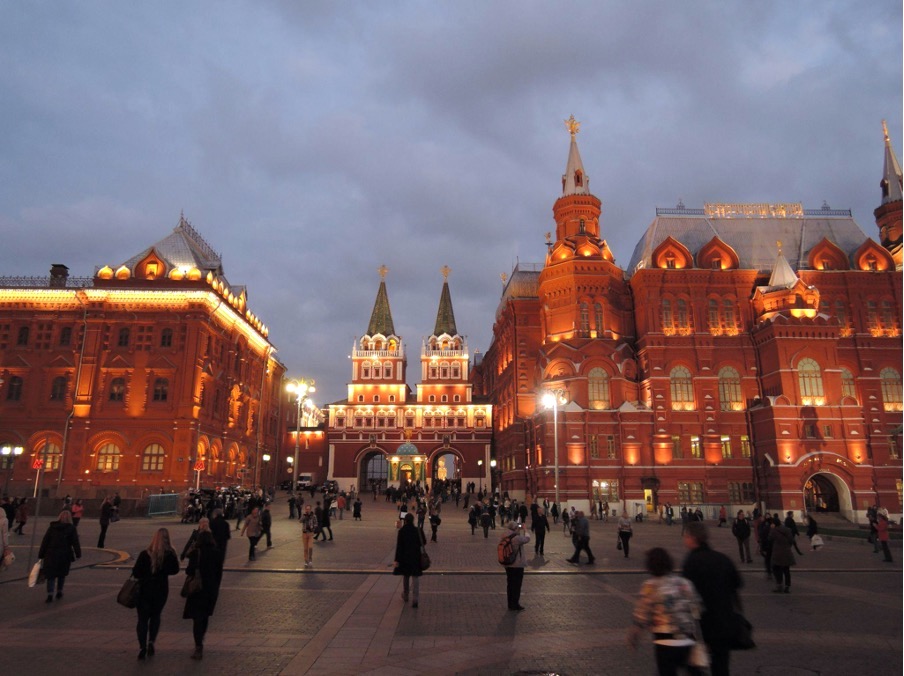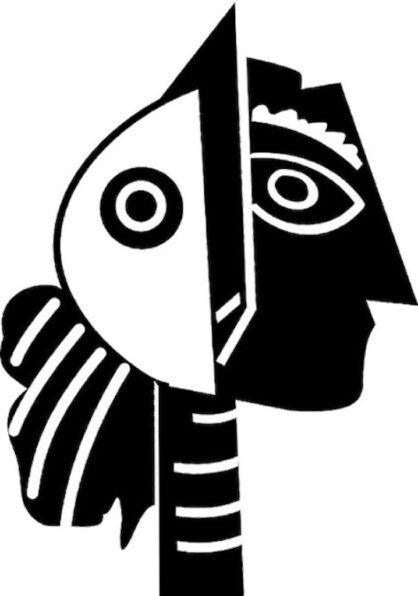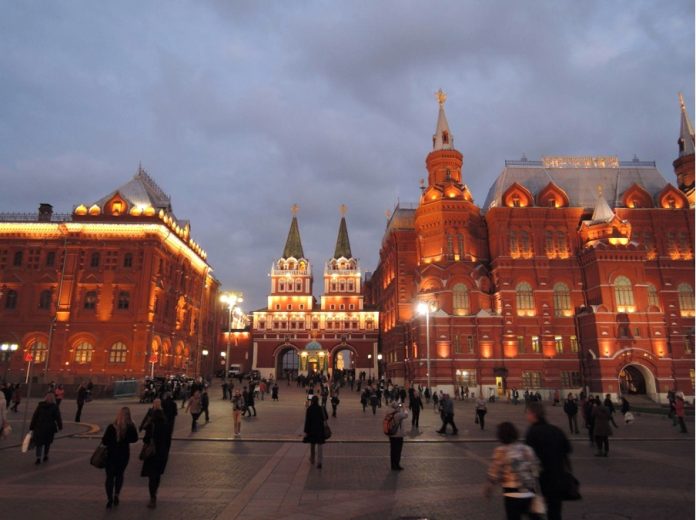In 1956, the Soviet embassy in Paris is filled with thirty-eight artworks of Pablo Picasso, waiting to be shipped to Russia.
It is early morning, and the place is quiet. You are drawn to the light. Light, light, reflecting in from the glass windows. Yellow-white. Refracting against the ceilings, moving, crossing, striping the floor. If you look closely, you can see the small specks of dust floating within it. You will see as it shifts across the space to brush against the colours of the pictures placed precariously in their boxes, illuminating them like stained glass. Nose runs to eyebrow, cheek to olive branch. And what is this? Hair, or the wings of a dove?
When the artworks reach Moscow, viewers queue for five hours at a time to see them. “Comrades!” a croaky-voiced official proclaims. “You have waited 25 years for this exhibition. Now wait 25 minutes!” Inside, exposition rooms are crowded, boisterous. Shoes emerge scuffed, toes red and sore, necks stiff from craning. One viewer writes in his diary, “the exhibit has stirred up extraordinary noise in the city. Brawls almost broke out by the paintings,” according to the article Picasso in Thaw Culture by historian Eleonory Gilburd. Another: “it has caused an explosion in me.”
In honour of Picasso’s 75th birthday, the All-Union Society for Cultural Relations with Foreign Countries suggested a special exhibition to the Central Committee. This was a surprising choice given that only a few years earlier, in 1947, Picasso’s work had been denounced as “formalist belch” by the Academy of Arts. The Pushkin Museum was confused; its report to the Ministry of Culture conceded, “the Picasso exhibition was not planned”.
Rather, it seized upon Moscow at a time when the city – and the nation – was writhe with change, uncertainty, and new beginnings. The great knell that announced the death of Stalin in 1953 was still sending tremors through the country, and Khrushchev sought to soften the hard edges of Stalinist communism with a future more open to foreign ideas and culture. This period is known to historians as ‘the Thaw.’
No brochures or posters were printed in preparation for the exhibition. No promotions or advertisements. Yet people flocked to it. Viewers’ comments that sourced Gilburd’s article reveal an atmosphere of dynamic exchange that stirred up aesthetic and generational divides. Picasso’s work was hailed as “the radiance of real art” that would “break through all obstacles,” and at the same time derided as “manure” that made a “mockery” of the viewer. The general concession was that the art was “not always intelligible, but, surely, it was enormous and sincere art”.

A more open approach to foreign art and a challenge to socialist realist aesthetics was one thing. But place yourself now in the Leningrad Arts Square, about a month after the exhibition arrived. The acrid smell of smoke cuts through the air as two young men dressed in chequered shirts toss papers into a fire. Metal screeches as they bang bin lids together rhythmically, and another group lifts sheets off painted protest signs. The students fold worn scarves around their necks, smoking meditatively and rifling through university newspapers. The Kul’tura of the Leningrad Technological Institute proclaims, “No Art Without Deformation”.’ A lull of conversation rumbles softly like the growl before an earthquake.
There is no official approval for the event and some junior KGB investigators fear that the recurrent ‘Picasso discussions’ would amount to a ‘little Budapest.’ In one sense it seems strange that the same people who infamously knocked on doors and took people in the night would concern themselves with student activism over a poorly-organised art exhibition. In another sense it is not strange, because the aesthetic was so fused with the political, and in any case the debate was never really about Picasso. For Eleonory Gilburd, ‘Picasso’ became a central image through which the key concerns of the Thaw were expressed. The discussions proclaimed ‘artistic freedom’ as their chief initiative but, as Gilburd writes, “At the heart was Soviet art – society – while Picasso was a name metaphor for everything Soviet society was not”.
More than anything it was the act of discussion itself, and the fact that the meaning of discussion – the free flow of ideas – was actually coming to fruition in a previously frigid environment. Iulia Krasovskaya, a 20-year-old Conservatory student and the centre of the student discussion, the air rushing through her hair as a bow against strings, proclaims: “Comrades, even throughout my short life, I have noticed how we have a very stagnant atmosphere not only in painting, not only in music, but generally in all public perceptions.”
She moves on to the Picasso exhibition itself: “One thing was exciting there – the atmosphere of lively debate. The problem is that the concept of socialist realism, which has been hammered into our heads since grade school, has completely discredited itself. We do not reject it, we simply don’t see it.”

‘Socialist realism’ here refers to the approved artistic style of the Soviet Union – socialist in content, realist in form. Renaissance aesthetics were channelled and reshaped to sculpt a radiant utopia, “from each according to his ability, to each according to his needs”. Scythes against golden locks of wheat, the rosy-cheeked face of a girl waving a red flag in the parade. Art was an extension and an expression of state power; those who strayed from state-sanctioned aesthetics had their careers cut short and sometimes their lives. Yet, as the Picasso exhibition suggests, art was also a big, bleeding agent of change, a focus of interest and an outlet of anger, ambition, and hope. The painter became the resistance fighter, clad in camouflage, the composer hides as a sniper in the trees, the writer sharpens the pencil.
The main thing I concluded as a History student at the University of Sydney is that in the Soviet Union, art was danger. It was the rallying cry of the dictator and the subversion of the resistor. It was the irony and the subtlety and the cowardice and the passion that lies between them. In any case, art and aesthetics held enough sway over people’s behaviours to make the claim that an understanding of society and culture is as critical to any historical study as traditional political and diplomatic perspectives.
What is art now? Could an art exhibition today have the same cataclysmic, brilliantly altering effect on a people’s consciousness and their society as Picasso did in Moscow? In 1989, Francis Fukuyama suggested an ‘end of history’ with the fall of the Berlin Wall. Perhaps there is simply nothing left to fight against – the dust settled, the scales balanced. Art as an organism floating through and above history has hit a wall, and is left without a function. All that is left is a shadow.
Or maybe it is that there is too much to fight against, that the evils of the modern world are simply too numerous and too pungent to be transformed, let alone abated, by art. Art has become a commodity, ensnared by the whims of the global art market and world capitalism. It has lost its power.
But come back now to the light. It slips across the halls and against the pictures, hangs in the air and bathes the room. As one viewer cited in Gilburd’s article observed, “Everything is alive, it all rings”.
The art is sonorous. Regardless of its effect or otherwise on society, if you listen closely, you can almost hear the chimes of a figure’s tambourine, his head a coiled line of hair and leaves.
Tam-tam-tam.
Tam-tam-tam.


